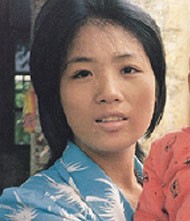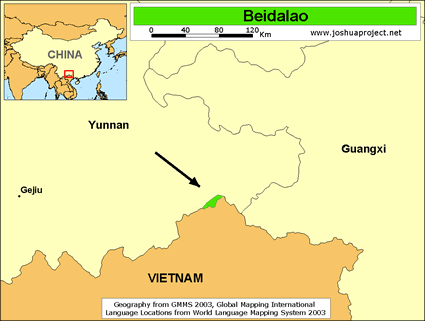Various scholars have speculated on the historical origins of the Yao and Miao peoples (including the Beidalao) who now live scattered across southern China and Southeast Asia. Egon Von Eickstedt has theorized that the Miao-Yao peoples and the Yi were originally part of the same Caucasian group in Central Asia, before they were driven from their homelands by drought in the first millennium BC. After living on the Tibetan Plateau for a time, they were compelled to move again to the empty lands in the south.
The Beidalao have only recently been acknowledged by Chinese experts as a subgroup of the Yao minority. They were not noted in the 1982 census, when many of the smaller groups in China registered their names with the authorities. The Beidalao are one of eleven groups of Bunu people in southern China. The Bunu were then included under the Yao nationality by the authorities. Linguist Robert Ramsey explains the complications caused by this classification: "Yao is one of the most confused ethnic classifications in China. The many groups known by that name are scattered widely and have been influenced by many diverse peoples; there is very little in all of their cultures that is invariably and unmistakably the same. The 'Yao' call themselves by more than twenty different names."
The Beidalao have lost the use of their own customs and have replaced them with numerous customs and ceremonies borrowed from the peoples alongside whom they have lived for centuries. Even their clothing reflects the Dong and Miao who live in the Rongshui County area.
Animism and polytheism are the major religions among the Beidalao. They also worship their "close" ancestors to the third or fourth generation. "Distant" ancestors (i.e., more than four generations) are not worshiped regularly but are included at annual ceremonies.
The exact status of Christianity among the Beidalao needs to be clarified, but there are very few Christians of any kind in the areas where they live. Mission work prior to 1949 only scratched the surface in northern Guangxi before foreigners were forced to leave China.
The Beidalao people need to submit to Jesus Christ so they can experience the abundant life he offers them in John 10:10.
Pray for bold workers who are driven by the love of the Holy Spirit to go to them.
Pray for an unstoppable movement to Christ among them.
Pray for the authority of Christ to bind hindering spiritual forces to lead them from darkness to light.
Pray for signs and wonders to happen among them and for great breakthroughs with a rapid multiplication of disciples and house churches.
Scripture Prayers for the Beidalao in China.
Operation China, Asia Harvest, Copyrighted © Used with permission
| Profile Source: Joshua Project |











